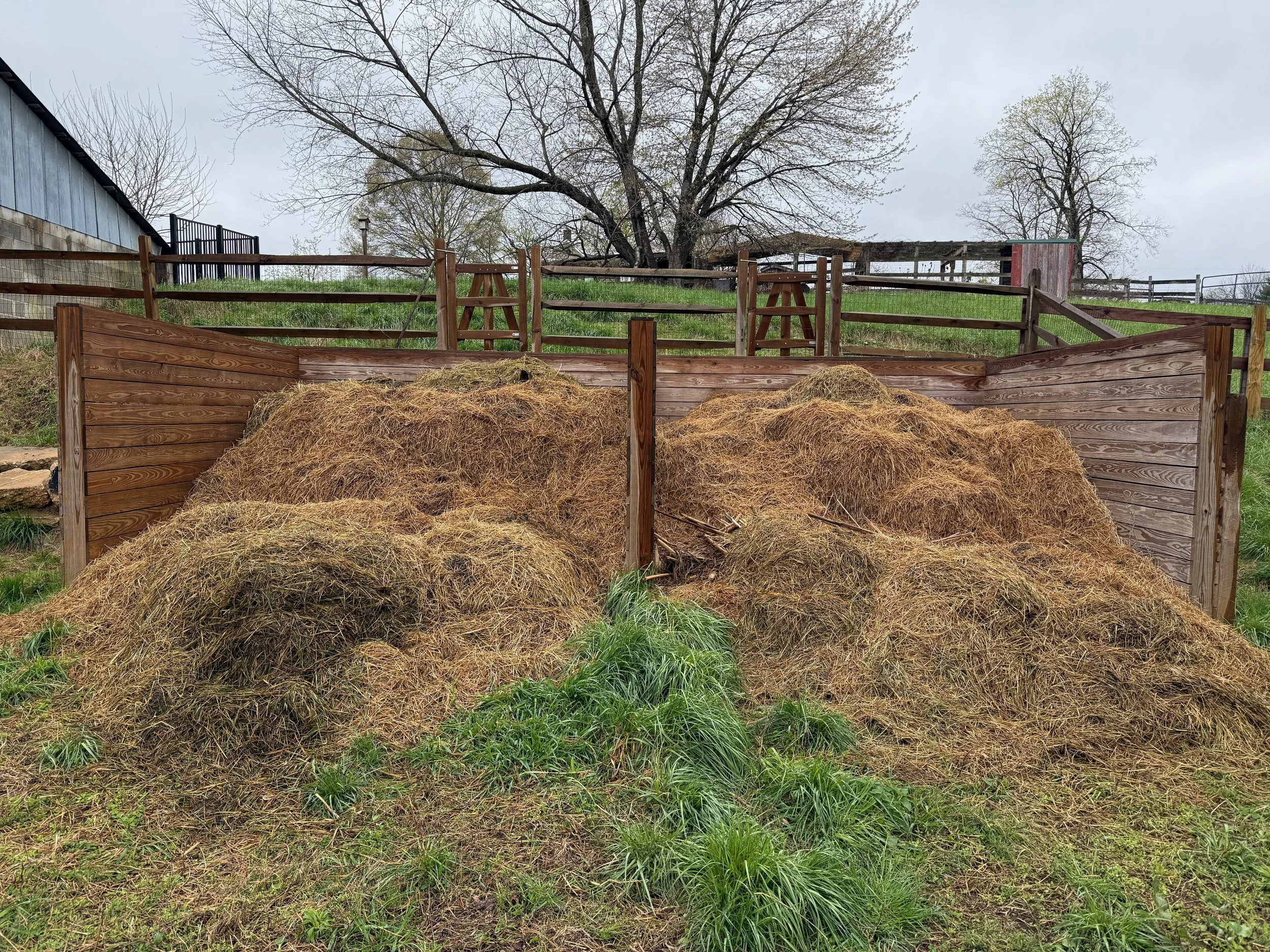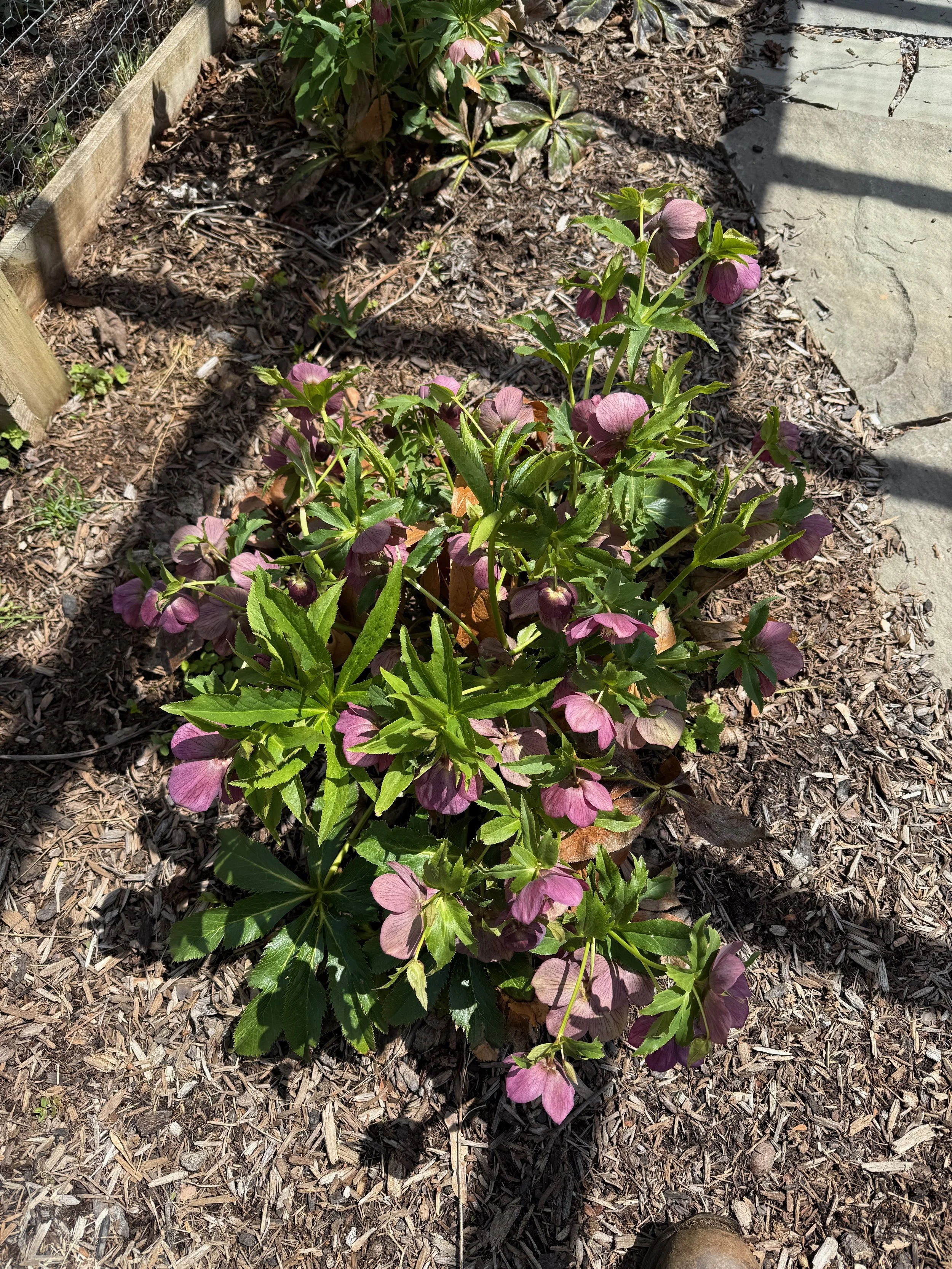Being Green
Two large compost bins with hay and goat/sheep poop from the barn areas: will be tilled into soil in the orchard where nepeta (which bees and butterflies really like) will be planted
Since the pastures are becoming lush and green and green buds are popping out all over, I thought I would talk about “Being Green”, i.e. being ecologically conscious and a good steward of the land and animals. With this in mind, there are a number of key practices enacted at Withers Wool and Farm:
Absolutely NO pesticides or chemical fertilizers are used at Withers Wool. Weeds are controlled by digging up the most onerous ones (like nettles), the goats eating them (when we arrived we had a lot of ragweed in the fields and it is almost all gone now), and mowing the pastures once or twice a year (which suppresses weeds and encourages leafy green grass and plants to grow.
The use of organic natural fertilizer and mulch when needed. For trees, plants and field sections that do need some fertilizer or mulch, the composted animal poop and hay that is raked up daily and put in two large bins is used along with wool pellets and wool from the belly and legs of the animals. (Both wool pellets and bags of wool for mulch and fertilizer are available in the shop for sale.)
Pasture rotation (which I have discussed in previous blogs/emails) which promotes healthy growth on the pastures, is the number one tool for pest management, and permits the goats and sheep to naturalize fertilize the fields as they graze as well as allow the hooves of the sheep and goats to aerate the soil.
Promoting biodiversity, especially for our pollinators, by establishing the pollinator garden, planting large areas of plants that bees, birds, and butterflies embrace (such as nepeta) and planting a number of trees along the stream running through the property to enhance water conservation and health. In past years, I have fenced off certain areas to allow trees to grow (and not be eaten by the goats and sheep). Trees selected to be planted on the farm are now trees native to Maryland to assist the local wildlife.
Looking for ways to minimize the use of plastic - still an ongoing effort. Plastic has many great uses. Having said that, I am concerned about plastic waste and micro-plastics in our environment. We do now store the wool and mohair in plastic bags, as anyone who has visited the shop has seen, and so I am investigating alternate ways to store and distribute the fiber. For the raw wool, I am considering to start using burlap bags for storage. For the wool roving, I am still doing research - glassine bags is one option. (I have read there are eco-clear bags made from plants and certified compostable materials - still digging into this.) And when possible I use wool instead of plastics and synthetics. For example, my waste wool, instead of plastic matting, was used as the base for the stepping stones on the farm.
That pretty much covers it. Of course, anyone using yarns, clothing, and products composed of animal fibers (e.g. wool, mohair, alpaca) and plant fibers (e.g. linen, cotton, ramie, silk) to some extent is helping sustainability. I realize that these fibers do not necessarily have to be raised or managed in a sustainable manner, but the possibility is there and certainly also shopping locally, where one can understand better the practices being used, can help foster ecologically sound practices.
Lenten Rose, one of the plants in the pollinator garden - attracts pollinators during late winter and early spring when few other food sources are available


